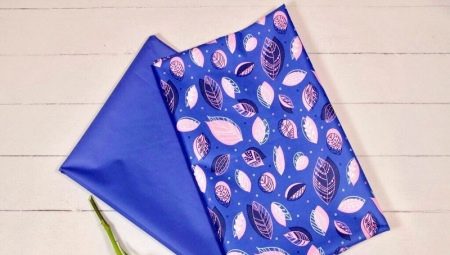One of the most popular materials produced using innovative technologies is membrane fabric, in everyday speech referred to as a membrane. Clothing made of it not only protects from rain, but also lets steam through, guaranteeing maximum comfort to its owner. It is enough for the latter to choose the most suitable type of membrane tissue, paying due attention to the description of the characteristics of the material in question.
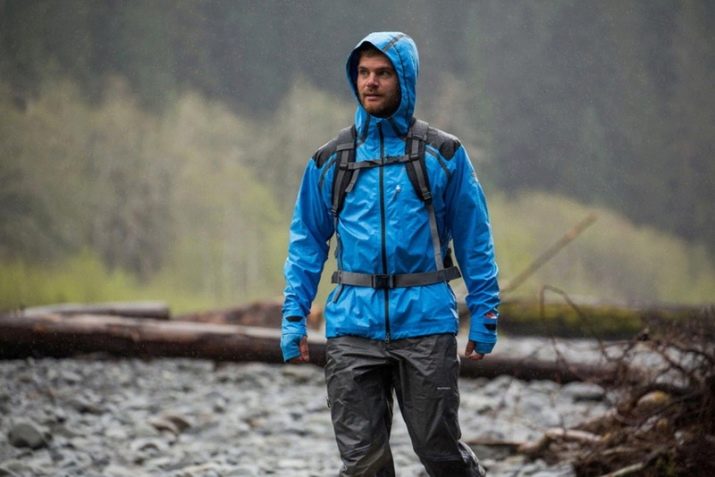
What it is?
The described fabric is a material of synthetic origin, belonging to the category of multilayer. Due to their properties, membrane products effectively repel moisture from the outside and at the same time do not interfere with the release of fumes accumulating in the clothes area. The outer layer of such a fabric performs not only an aesthetic, but also a protective function, while the inner layer is characterized by softness, which contributes to wearing comfort (in some cases, it can be replaced by a lining).
As for the membrane itself, it is located between the above layers. This tissue component is a thin film made of high molecular weight compounds and applied to the base material. In Russia, the fabric described is produced on the basis of GOST 28486-90, the requirements of which it must fully comply.
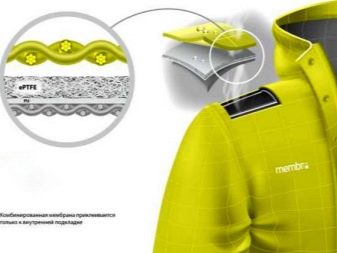
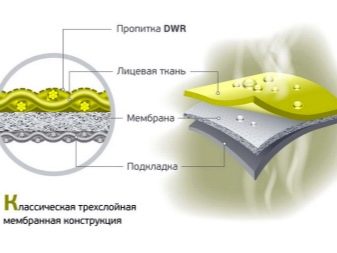
Structure
As mentioned earlier, the membrane is an important component of the material in question, but not its only component. The basis of the latter is most often synthetics (for example, polyester), to which this film is “soldered”.
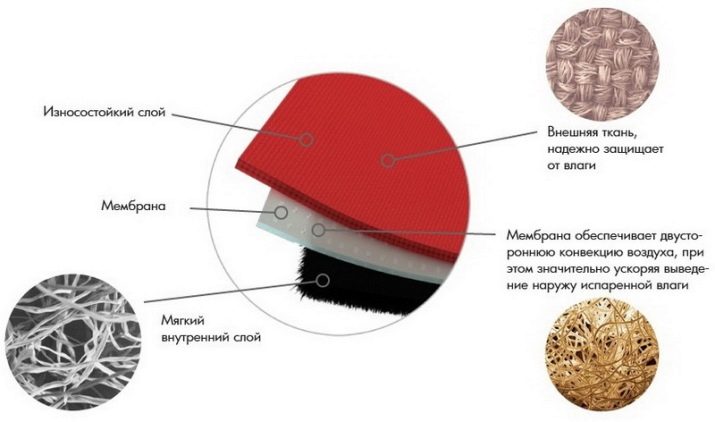
To date, several materials are used to make membrane fabrics.
- Teflon. It has microscopic pores that effectively prevent the penetration of external and promote the evaporation of internal moisture. The main disadvantage is gradual clogging.
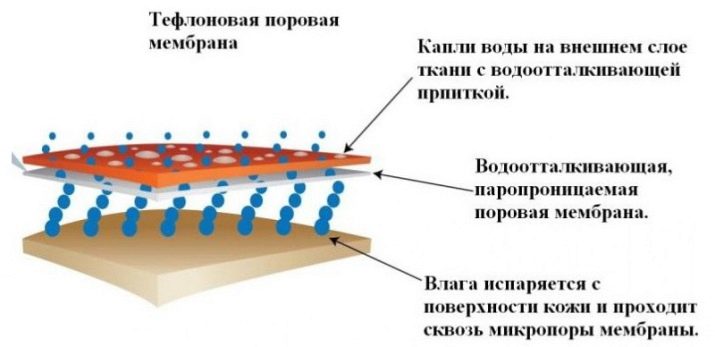
- Polyurethane. A key feature is maximum water resistance. The main disadvantage of polyurethane products is the relatively slow evaporation of moisture accumulated in the clothing area.

- Polyester. The main advantages of this material are wear resistance and high strength, thanks to which it can be used for many years. In addition, polyester is pleasant to the touch and holds its shape perfectly.
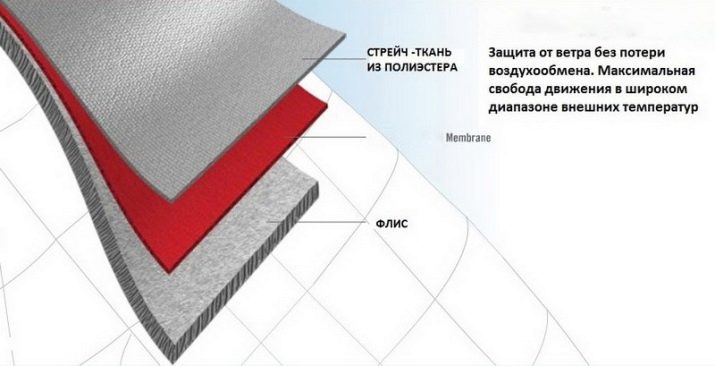
Also, to solve the described problem, cotton is used, primarily notable for its ability to retain heat, and bamboo, which boasts strength and hypoallergenicity.
Mentioned are also worthy of combined materials: thanks to the presence of a protective layer, they minimize the likelihood of clogging of the membrane and extend its life.
The properties
There are two main qualities of membrane tissues - water resistance and vapor permeability. The first provides protection against external moisture (for example, rain): the higher its value, the longer a person will feel dry. It must be borne in mind that the membrane can repel water for a certain time, after which the latter begins to penetrate into the clothing area. In this way, the fabric described differs from polyethylene and rubberized materials, which do not allow water to pass through at all, but are also unable to provide optimal air exchange for humans.
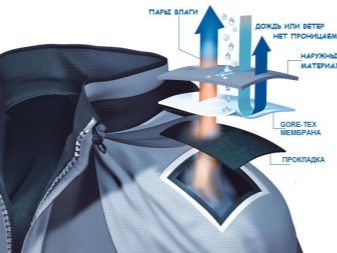
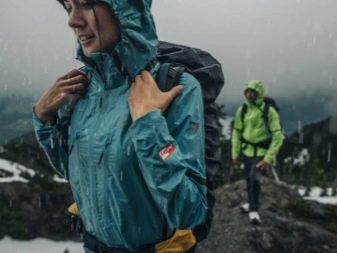
As for vapor permeability, it determines how “breathing” the membrane is. The higher this value, the more comfortable it will be to wear clothes from this material with significant physical exertion.
As in the case of water resistance, the vapor permeability of the membrane tissue has its own limits, and therefore may not cope with its duties if sweating is excessively intense.
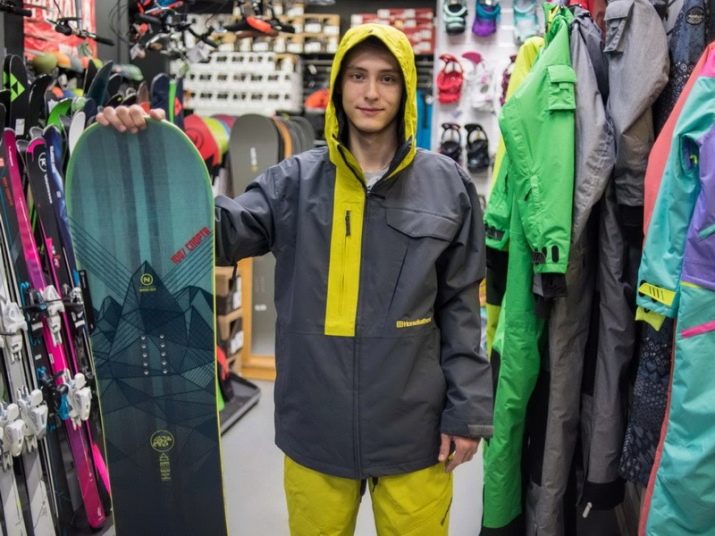
Other advantages of the material under consideration are noteworthy, namely:
- maximum wearing comfort, eliminating stiffness of movements;
- universality, due to which products from membrane fabric are suitable not only for adults, but also for children;
- good protection from strong winds;
- relative ease of removing contaminants.


Separately, it is worth mentioning the shortcomings, the list of which looks like this:
- high cost of products (provided that they meet established quality standards);
- the use of artificial components that do not suit supporters of natural materials;
- not the highest resistance to wear, the specific value of which depends on the category of membrane fabric.
In addition, the described material is quite difficult to care for, which will be described in detail below.
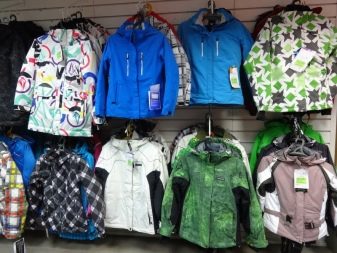
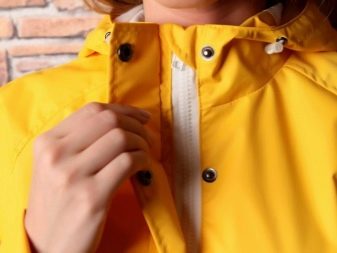
Many believe that membrane tissue warms well, but this is not so. By removing excess moisture to the outside, it reduces the risk of body cooling, however, at low temperatures, there should be two layers of warm clothing underneath.
Types and their characteristics
Depending on the features of their structure, membrane paintings are divided into 3 categories.
- Porous. The second name is hydrophobic. Thanks to the presence of micropores, it guarantees the effective removal of moist air from the clothes area to the outside. At the same time, this fabric retains water, providing its owner with a feeling of dryness for a long period of time. A noticeable drawback of the materials of this category is the clogging of pores, the degree of which depends on the operating conditions of the product.
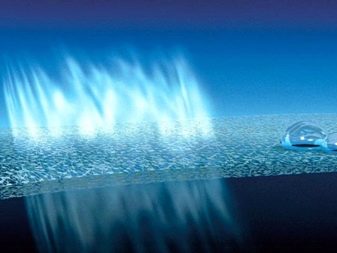
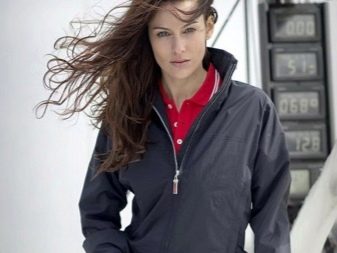
- Non-porous. This variety, also called hydrophilic, is characterized by the absence of microscopic holes in the membrane layer.It copes with the removal of wet vapors outside due to diffusion, which assumes their smooth transportation from the inner layer of the fabric to the outer. Given the length of this process, the owner of the product may experience some discomfort (it will seem to him that the clothes are wet).
The effectiveness of the use of non-porous tissue is particularly reduced, provided that the humidity outside is too high.
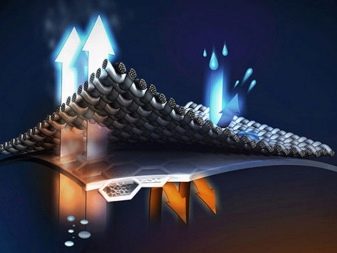
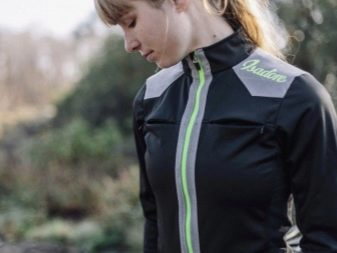
- Combined. Such materials organically combine the advantages of the two categories discussed above. Their manufacture involves the use of a hydrophobic membrane, on which a relatively thin layer of polyurethane is applied. The disadvantage of paintings of the combined category is only one - high cost.
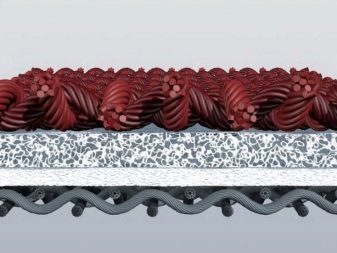
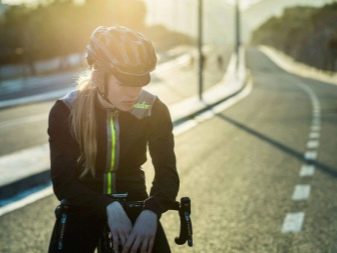
Also, depending on the design of the membrane tissue, 3 other varieties of it are distinguished, each of which has its own remarkable characteristics.
Double layer
In this case, the membrane has only external protection, and therefore involves the use of an additional lining (usually mesh). The absence of the latter leads to inevitable clogging and mechanical damage to the material, and therefore is unacceptable.

Products marked as “2L” boast low weight and good vapor permeability. In addition, two-layer membrane fabrics are used in clothing, the inner surface of which has an insulating layer.
Three layer
The described species is labeled “3L” and provides more reliable, two-way membrane protection. Due to this feature, the latter has a high resistance to wear, which is its obvious advantage. The material in question looks like a fabric, the wrong side of which is covered with a fine mesh.
Despite its obvious advantages, the three-layer variety has one significant drawback - high cost. Given this circumstance, such a fabric is used relatively rarely - mainly for the manufacture of professional equipment.

Knitted lining
This type of membrane tissue, also called "2.5L", is largely reminiscent of a two-layer, but does not imply the use of a standard lining. Instead of the latter, a layer of foamed knitwear is used to protect the membrane from mechanical stress and clogging.

The main advantages of this material are compactness and lightness. Special attention should be paid to the fact that these advantages do not detract from the other advantages of membrane tissue.
How to distinguish from ordinary fabric?
There are several basic ways to distinguish membrane tissue from normal. In order to buy a product with interesting properties and minimize the likelihood of acquiring a fake, it is enough for the client to adhere to the following recommendations.
- The simplest solution is to visit stores selling products from trusted brands.
- The price of a product made of membrane fabric cannot be low. This is due to the complexity of manufacturing this material, involving the use of advanced technologies.
- Often the name of the product in question contains the letter “-tex” (for example, “Sympatex” or “Gore-Tex”).
- The products of many popular brands are sold under license. If the seller does not sell fakes, he must have all the permits.
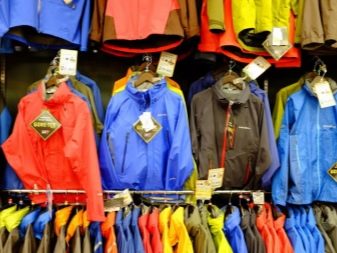
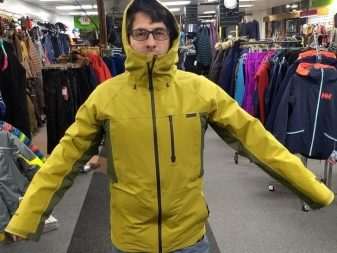
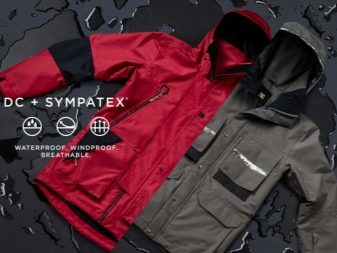
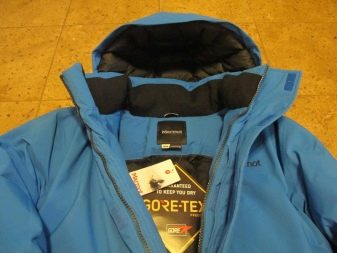
In addition, the buyer can check the water resistance of the product at home using an ordinary shower. As for breathing properties, to determine them, you need a container of hot water located under the fabric, and the glass with which the latter is covered.
If the material is a membrane, it will let steam through, resulting in fogging of the glass surface.
Where is it used?
Practice shows that the use of membrane tissues is justified in a variety of situations requiring optimal air exchange and effective protection from high humidity.Such materials are especially appreciated by lovers of winter sports, tourism, mountaineering, hunting, fishing and many other hobbies involving significant physical exertion. In addition, membrane fabrics are suitable for the manufacture of children's clothing - jackets, suits and overalls.

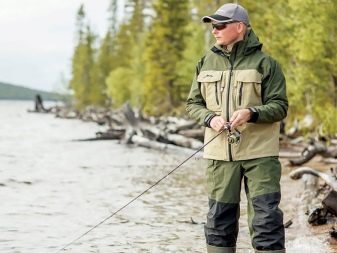


It is also worth mentioning the undesirability of everyday use of products from the material in question. This circumstance is explained by three main reasons - the high cost of such products, the relative complexity of caring for it and the need to wear an additional layer of warm clothing.
Selection rules
Before purchasing clothes from membrane fabric, the buyer needs to consider the conditions in which it will be used. Following this recommendation, you can get exactly the product that optimally matches the tasks assigned to it.
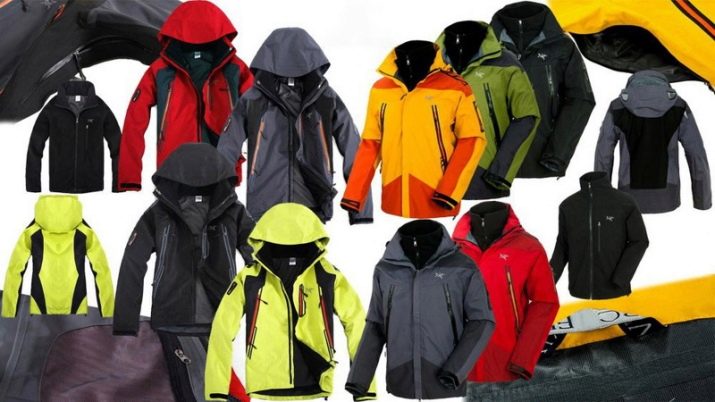
Choosing the right product, the buyer needs to pay attention to two key parameters - the water resistance and vapor permeability already mentioned above (for example, 7000/7000). The indicative values of the first are listed below:
- 3000 - insignificant precipitation lasting relatively short time;
- 5000-7000 - rain of medium intensity;
- 10000-15000 - strong and prolonged rainfall;
- 20000 - storm (products with such water resistance are intended for yachtsmen and lovers of extreme relaxation).

To select a product with suitable vapor permeability, the buyer should use the following list:
- 3000 - low level of physical activity (normal walking);
- 5000-7000 - Slow movement on terrain with difficult terrain or jogging;
- 10000-15000 - maximum physical activity (skiing).

Some other interpretations may also occur, slightly differing from the above.
Care Tips
In order for clothes made of membrane fabric to please their owners as long as possible, the latter should pay due attention to caring for them, which provides for a number of important nuances. Washing such products requires certain features.
- Inability to use ordinary detergents. This is because the washing powder clogs the pores of the membrane, significantly reducing the vapor permeability of the tissue. The same effect is observed after the use of bleaches and conditioners.
- Detergents containing chlorine act on the membrane materials in a diametrically opposite manner. They do not clog pores, but increase them, increasing vapor permeability and worsening the water resistance of the tissue. Thus, the use of such funds will also have to be abandoned.
- To preserve the special properties of the membrane material, it must not be machine washed. For the same reason, experts do not recommend soaking and wringing such fabrics.
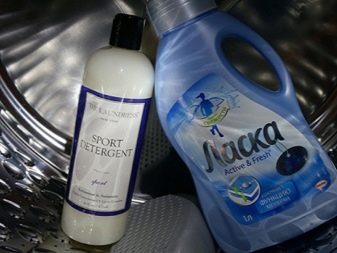
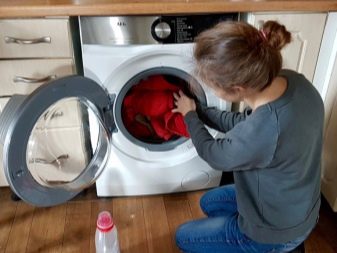
Dry clothes made of membrane materials need to be parallel to the surface of the earth, previously straightened, at a temperature of 15-25 ° C. Other significant conditions include good air exchange between the room and the surrounding space, as well as the inadmissibility of direct sunlight.
It is impossible to iron clothes from a membrane fabric. Ignoring this rule can destroy the structure of a material that is very sensitive to high temperatures.
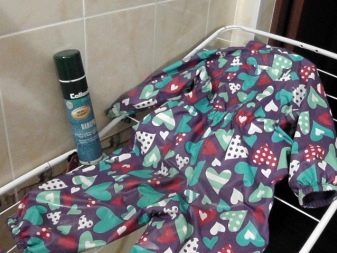
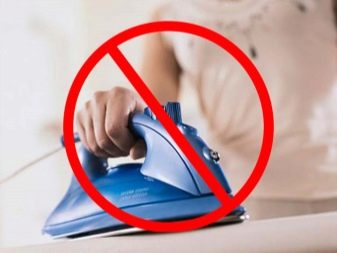
To restore the water resistance of the fabric described, a special impregnation is used - spray or liquid. This tool forms a film that has several positive qualities at once. In addition to returning water-repellent ability, she:
- does not reduce the vapor permeability of the material;
- increases the resistance of the fabric to pollution;
- reduces the negative effects of ultraviolet radiation.
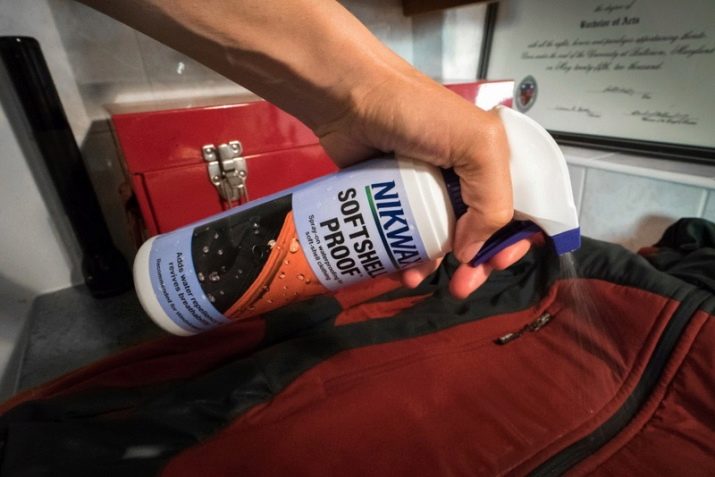
Processing of products using impregnation must be carried out after washing. It is also worth considering that in some cases, the fabric may slightly change its original shade.
Storage of clothes made of membrane materials requires compliance with two conditions - preliminary straightening and vertical positioning. In addition, it is desirable to cover such products with polyethylene that prevents dust from entering their pores.
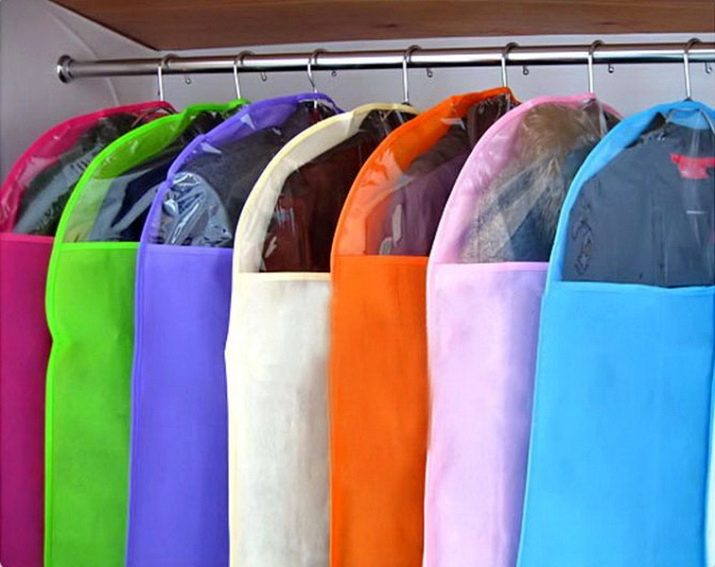
In conclusion, it remains to note that an increasing number of consumers are giving preference to membrane tissues. The advantages of such materials are obvious to every lover of an active lifestyle, which regularly finds its practical confirmation.
See how to choose membrane clothing in the next video.
